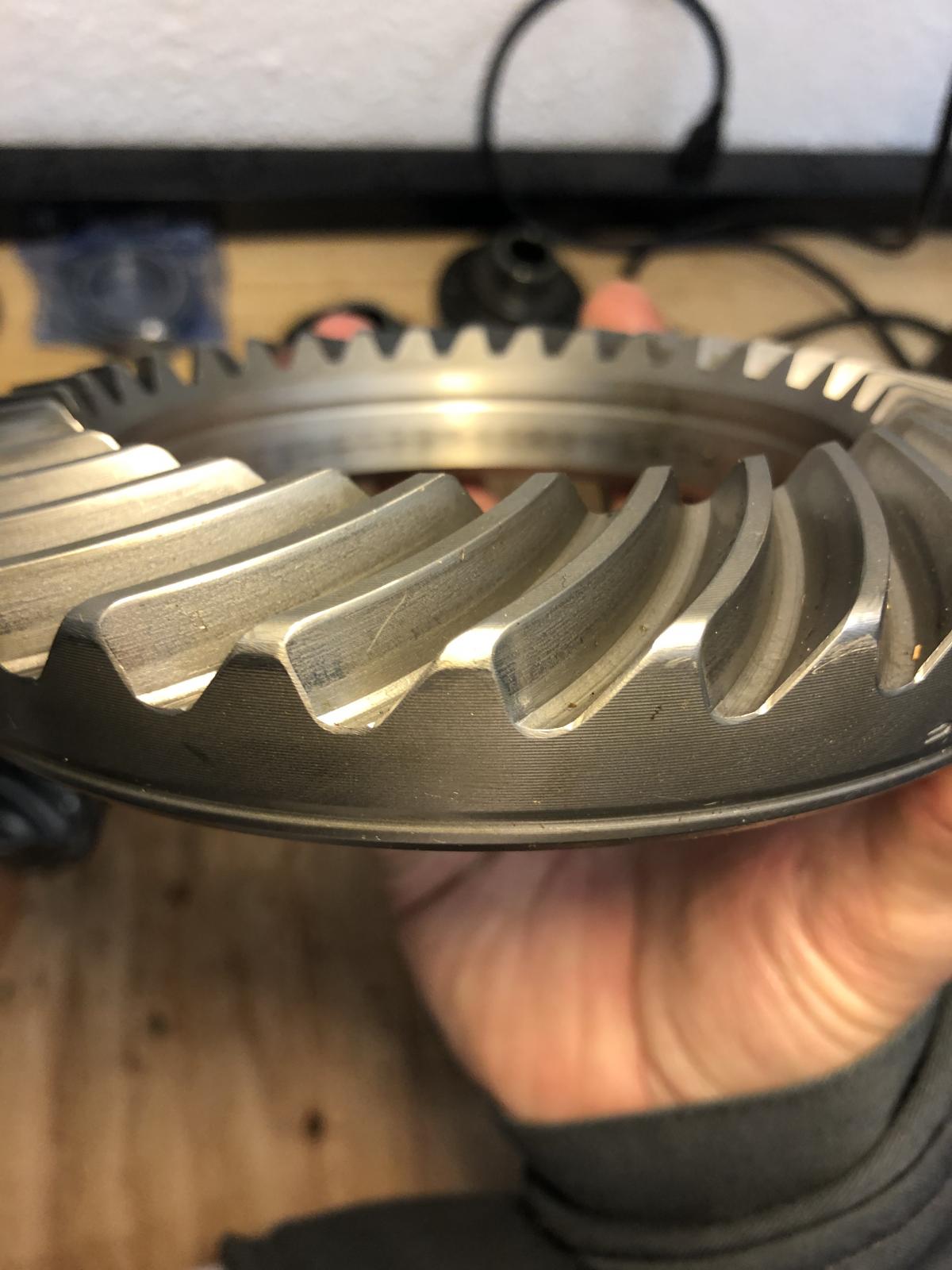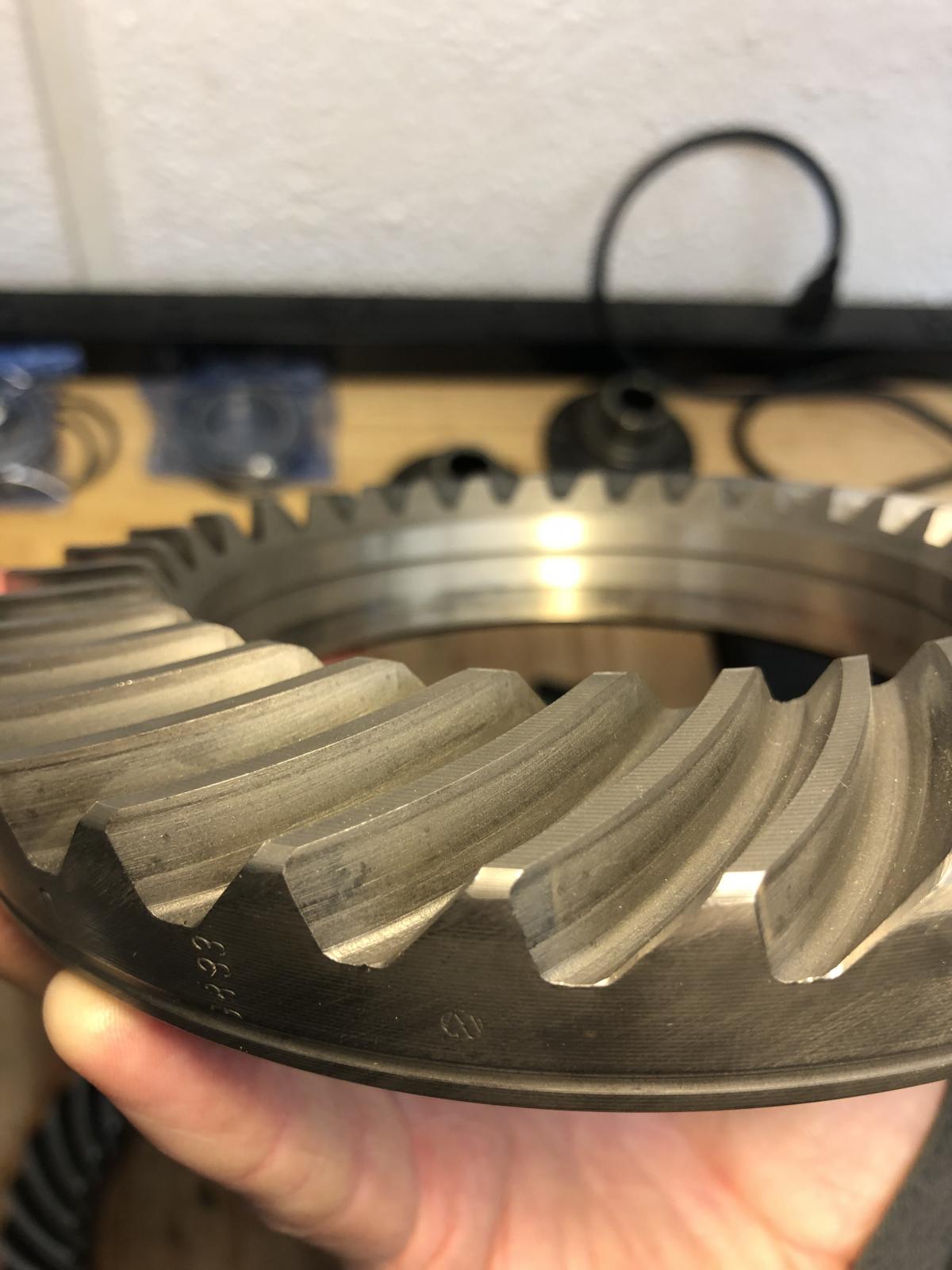https://www.shoptalkforums.com/viewtopi ... your+trans
Gears mentions having the ring n pinion "tip relieved".
Anybody got details on this one?
Here on one rebuilt box i took apart you can see all of the edges are broken.
Including the tips of the teeth:

Compared to the same type of R/P stock:

Is this an example of tip relieved?
I remember reading somewhere that this was done to keep burrs out of the oil?
Or maybe to keep things quieter?
How best to do this?
Maybe Roloc disk or small stone in a die grinder?
Maybe a bad idea altogether?
Much thanks as always, gents.
Build Box Better!